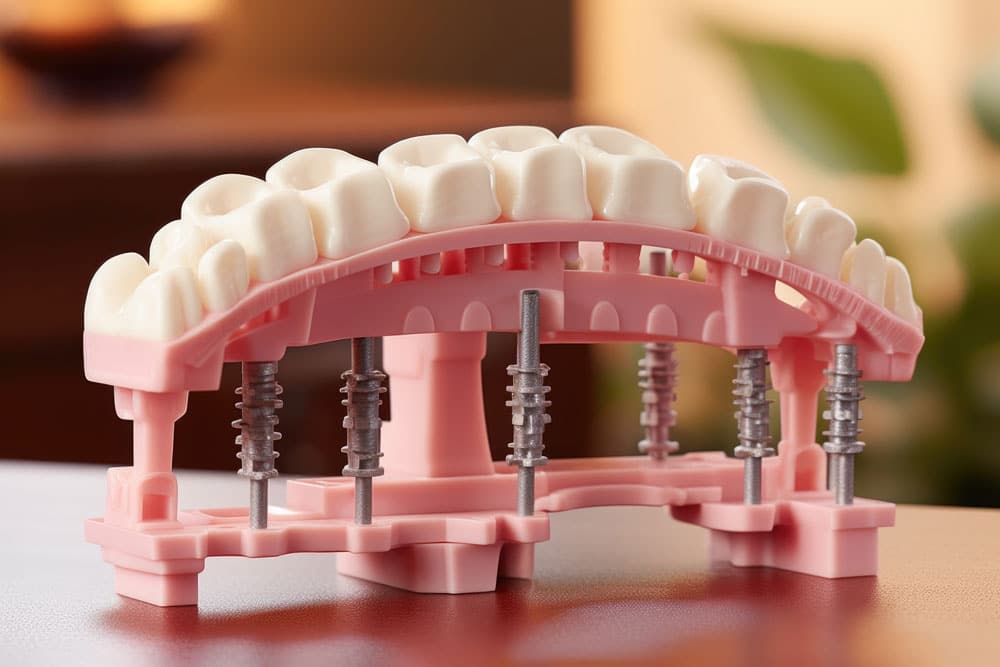
Implant-Supported Bridges
For patients who have lost more than one tooth, an implant-supported bridge offers a secure and permanent solution.
Having missing teeth can also affect your ability to chew nutritious foods. Other tooth replacement options, such as removable partial dentures, aren’t as stable as implant-supported bridges. An implant bridge can return the majority of your chewing function so you can eat what you want again.
What Is An Implant-Supported Bridge?

How Many Implants Are Used?
Having missing teeth can also affect your ability to chew nutritious foods. Other tooth replacement options, such as removable partial dentures, aren’t as stable as implant-supported bridges. An implant bridge can return the majority of your chewing function so you can eat what you want again.
Procedure Overview
Getting an implant-supported bridge takes several appointments.
The first step is the placement of dental implants.
After initial placement, it usually takes several months for the bone and gums around the implants to heal.
Once implant sites are healed, the dentist will take impressions of your mouth in order to make a mould.
Using the resulting model of your teeth, the lab technician will create your custom crown, color matched to your existing teeth.

Uninsured Patients Can Benefit from Our In-House Dental Plan
Using the resulting model of your teeth, the lab technician will create your custom crown, color matched to your existing teeth.
Once the final bridge arrives the dentist will either screw or cement it in place on the implants.


